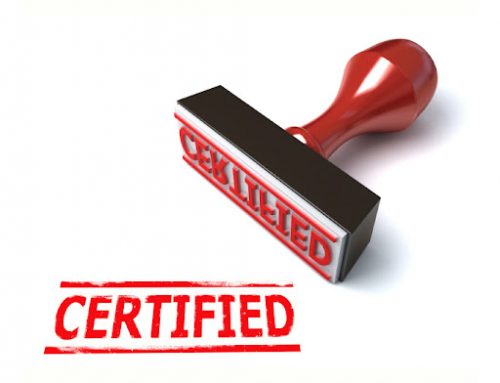ISO 9001 Quality Management Systems requires the appointment of a management representative. This position may be full-time or part-time depending on the size of your organisation, the complexity and the risks. The management representative is often called the Quality Manager. If you are implementing other management systems to manage other business risks then this person could also be called the Health, Safety, Environment & Quality (HSEQ) Manager, Quality, Safety and Environment (QSE) Manager, Integrated Management System (IMS) Manager, and the list goes on.
But what does the management representative actually do?
5 Management Responsibility
5.5.2 Management Representative
What does ISO 9001 Say?
It’s a big job but the standard manages to express it in just a few lines.
Top management shall appoint a member of the organization’s management who, irrespective of other responsibilities, shall have responsibility and authority that includes:
a) ensuring that processes needed for the quality management system are established, implemented and maintained,
b) reporting to top management on the performance of the quality management system and any need for improvement, and
c) ensuring the promotion of awareness of customer requirements throughout the organization.
NOTE: The responsibility of a management representative can include liaison with external parties on matters relating to the quality management system.
Why?
Quality is not the responsibility of one person or one department. In fact, when quality management is perceived in this singular manner, efforts to improve the quality of products and processes tend to be localised rather than across the organisation, and they tend to fail. Having said that it makes sense, especially when commencing the journey, to appoint someone to the job of developing the quality management system and coordinating its implementation. This person, the management representative, is not responsible for doing all things quality. Once the management system is implemented this person is responsible for regulating compliance through their influence because, just as most managers have some responsibility for finance, human resources, and productivity, so too should they have some responsibility for product and service quality.
Interpretation
Let’s break it down
a) ensuring that processes needed for the quality management system are established, implemented and maintained.
The Management Representative is responsible for determining which processes in their organisation are relevant to product and service quality and hence ISO 9001. Don’t forget to keep the scope of your management system in mind because if you are keeping the scope narrow by, for example, just getting part of the organisation certified then this will affect the processes that are relevant. Once listed, the processes need to be communicated and this can be done through the typical written procedure, process maps, flow charts, diagrams, drawings, photos, videos, etc. ISO 9001 uses the work shall when you must document a procedure or keep a record. By the way, the management representative does not have to write all the documents. In fact more commitment can be gained by sharing this job and in reality, others who work with the process on a regular basis may be better placed to accurately describe it. The management representative does need to coordinate it, provide guidelines, and verify that the right results are achieved.
Implementing the quality management system is the hard bit and will take all the communication, influencing, and change management skills the management representative can muster.
Once implemented, the management representative is responsible for maintaining the system by keeping it up-to-date. Organisations change as they grow and seek new opportunities, respond to markets and the economic climate. Also, people find better ways of doing things. This necessitates changes to your quality management system.
b) reporting to top management on the performance of the quality management system and any need for improvement.
If the management system you are implementing is to receive support from senior management then they need to know what is going on. The management representative is responsible for collecting and analysing data to determine whether the quality objectives are being achieved, and if not, what can be done about it.
c) ensuring the promotion of awareness of customer requirements throughout the organization.
This means that the management representative is responsible for encouraging and supporting initiatives by others that help staff at all levels to understand the external customer’s wants, needs and expectations and how important the customer is to the health and profitability of the organisation. The management representative is not responsible for communicating all of this but they are responsible for ensuring it happens and is effective.
How is this Demonstrated?
The management representative is responsible for developing a system that will explain how the organisation is to be run in order to meet customer requirements effectively and efficiently. This is a very important role and deserves to be a senior management appointment. No matter whether it is a full time or part time role, the responsibilities need to be communicated in the same way that you communicate the responsibilities of other roles in the organisation. This could be through an organisation chart, job description, process maps, flow charts or procedures. Just make sure that somewhere the above responsibilities from the standard are encapsulated.
I usually report to senior management on the performance of the quality management system during management review meetings. It could also be done in any other meeting that senior management holds regularly but ensure that the report is documented in the minutes. How regularly you report on performance is up to you but always transform your analysis into language that will make senior managers take notice, use graphs where relevant, and keep it succinct.
Awareness of customer requirements can be accomplished by communicating the quality policy and objectives, through induction training, other training sessions, staff briefings, newsletters, the intranet, posters, noticeboards, etc. In larger organisations you may like to develop a communication plan showing what will be communicated, by whom, how, and when. Evidence that these communication activities have occurred will be sufficient.
If you’d like some guidance or need a sounding board please email me at liz.cole@groweq.com.au. Alternatively, visit my website where you’ll find my Top 5 Essential Tips and free ISO 9001 procedures.





